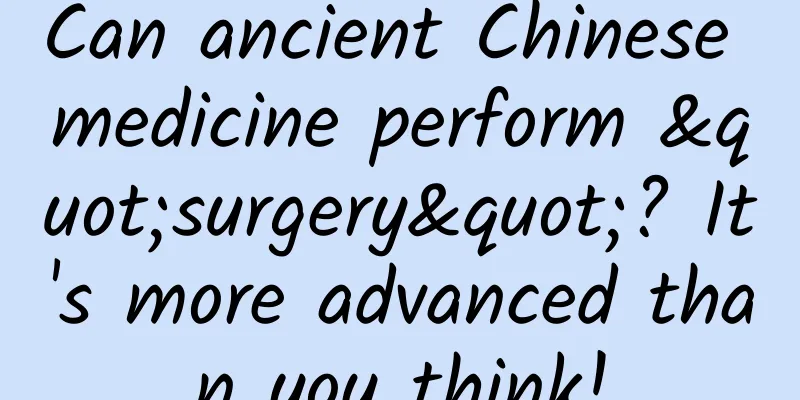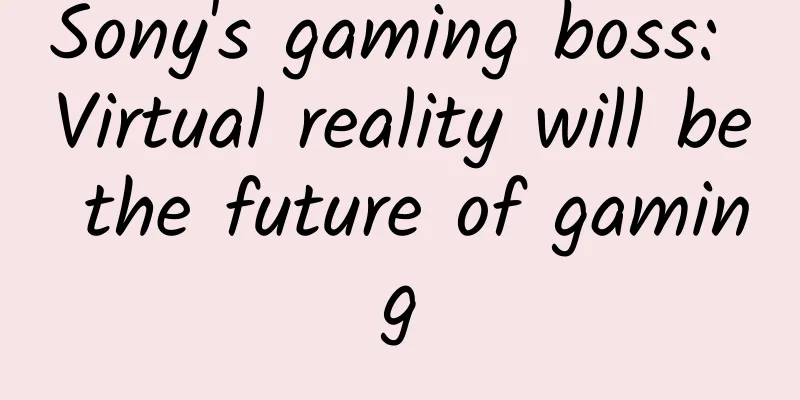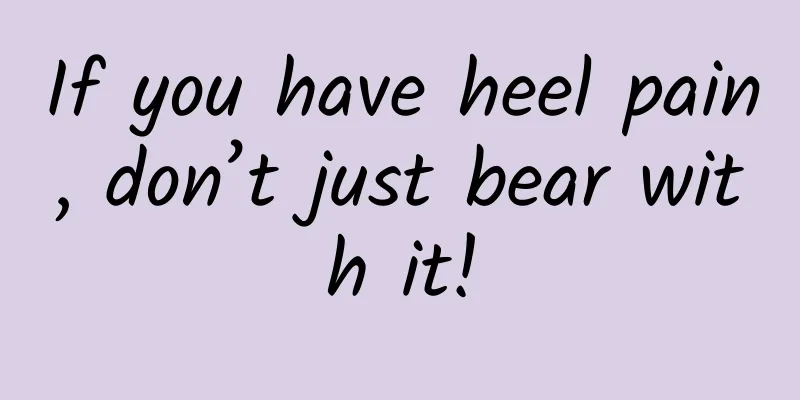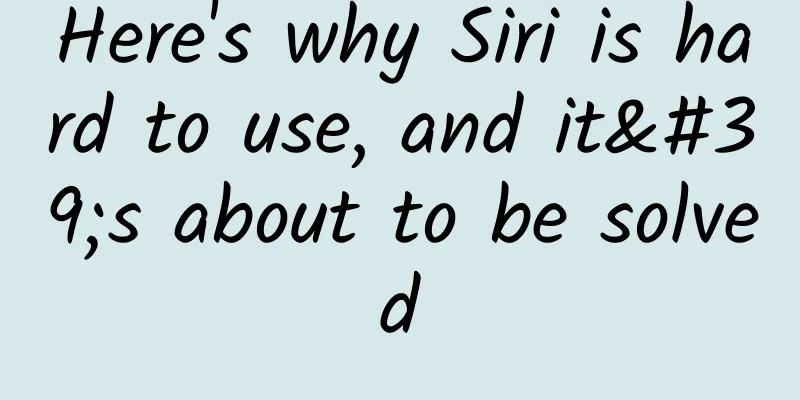Can ancient Chinese medicine perform "surgery"? It's more advanced than you think!

|
On July 5, 2023, the Science Popularization China Starry Sky Forum, with the theme of "Empowering Cultural Relics with Science and Technology to Bring Them to Life", invited 5 cultural and historical experts from different fields to talk about how science and technology can empower cultural relics protection and make cultural heritage timeless from the aspects of cultural relics excavation, restoration, display, protection and exchange. Professor Yu Gengzhe from the School of History and Culture of Shaanxi Normal University gave a speech: "From India to China, the Millennium Journey of an Ophthalmic Surgery" The following is an excerpt from Yu Gengzhe’s speech: From a skull In your impression, is Chinese medicine good at surgery? It seems that we think Chinese medicine is only about decoctions and acupuncture, and is not good at surgery, but in fact Chinese medicine also has its own tradition of surgical operations . A skull like the one below was unearthed in a tomb at the Dawenkou culture site in Fujiapo, Guangrao, Shandong. After being tested by archaeologists and medical experts including Mr. Han Kangxin from the Institute of Archaeology of the Chinese Academy of Social Sciences using CT and X-ray technologies, they finally concluded that this was a skull from a prehistoric craniotomy . Photo courtesy: Yu Gengzhe This picture shows the details of the circular fracture after the skull surgery. You can see that the upper and lower bone plates of the circular fracture have healed . What does this mean? It means that this person survived for at least two years after the surgery, which shows that the surgery was successful. Combined with the many micro-traces left around it, more than 30 experts finally issued a report stating that it was a trace of surgical operation. I once wrote a paper titled "The Doubted Hua Tuo", which specifically explored whether Hua Tuo's surgical skills really existed. My view is that Hua Tuo's surgical skills have a written origin and must exist. Some people online have questioned this, thinking that the ancient Chinese would not have been able to perform surgery. One logic is that the ancients did not understand human anatomy. How could they have dared to perform surgery on something as complex as the skull, which has so many nerves and blood vessels if they did not understand human anatomy? Why did surgery gradually fade out of the historical stage in traditional Chinese medicine? Because we are more and more familiar with the structure of the human body , and after understanding it, we are afraid to do it. So in my opinion, China also has a tradition of surgery. However, the traditional Chinese medicine surgery we are talking about today is different from the one just mentioned. It is an imported technology, and then it was absorbed and developed by us in our local area. This is what I want to talk about today, " needle removal of cataracts." The origin of the “Golden Comb Technique” It is not surprising that the technology of cataract removal with a needle was born in India . India is located in the tropics, so there are many patients with eye diseases. In other words, doctors have enough opportunities to practice and accumulate experience. Therefore, India has been famous for producing ophthalmologists since ancient times. These doctors came to China along the foreign trade route in ancient times. Many Indian ophthalmologists are very popular in China. Cataract ablation is also known as "golden comb surgery" because it uses gold needles as surgical tools. It was born in India in the 4th century BC and entered China after the Han Dynasty along with Buddhism . It was mentioned in the Mahaparinirvana Sutra translated during the Northern Liang period that "a good doctor uses a golden chisel to cut out the eye membrane." The so-called "chi" is equivalent to "鈚". The "鈚" in weapons is a thin, long and very sharp tool that looks a bit like a sword. It is used to cut open the white film on the eye. This tool later developed into what we call "golden needle". As the "Golden Comb Technique" became popular in China, there was also a special ophthalmological monograph on the treatment of cataracts, called "Nagarjuna Bodhisattva's Eye Treatise". It was probably written during the Sui and Tang Dynasties, and both the title and the content were greatly influenced by ancient Indian medicine. This book records the art of acupuncture and also says that when your cataracts can no longer be cured by medicine, you can try the art of acupuncture, "Only use the golden needles to move them, like clearing away the clouds to reveal the sun." "The Essentials of the Dhamma Spoken by Nagarjuna to King Dhyānagarka" Photo courtesy of Yu Gengzhe Traditional Chinese ophthalmology speculates on the steps and methods of the ancient "golden comb technique": "When the needle is pushed along the ciliary body and the lens toward the pupil area, when it reaches the front of the lens, it first goes around the equator of the lens in the 6 o'clock direction, goes to the back of the lens to cut the 4-6 o'clock suspension ligaments, then withdraws the needle, re-enters the front of the lens, and cuts the other suspension ligaments in turn..." After being broken, the cloudy lens will be peeled off and fall into the vitreous body, and the patient's eyes will be able to regain sight. However, this surgery also has its flaws . After the removal, you will find that your eyes are farsighted , and there is a greater probability of developing glaucoma . "Yuan Ji Qi Wei" once said about the "Golden Comb Technique" that this operation can never be guaranteed, "Five to six out of ten people are cured by this method, and four to five out of ten are incurable." Localized improvement of the “Golden Comb Technique” The technology was introduced to China, and cataract removal was soon localized. Photo courtesy: Yu Gengzhe There was a famous ophthalmologist in the Song Dynasty named Wang Yanruo , and the process of his surgical operations was recorded by Su Shi. After reading it, Su Shi said that Wang Yanruo "uses the needle like an axe", and the "jin" here means an axe, which means that Wang Yanruo's removal of the needle is like demolishing a house, just like Lu Ban chopping wood. He also asked Wang Yanruo, your skill is so magical, is there any miracle, "I often suspect that you are good at illusion, and your other skills are mixed with talismans and spells." As a result, Doctor Wang kicked him out without hesitation, saying that it was his specialty, why should he tell you. Su Shi is a very interesting person. There is also an interesting record about the use of acupuncture to remove cataracts in the Song Dynasty . This is related to the mother of Emperor Gaozong of Song and also to Emperor Huizong and Emperor Qinzong of the Song Dynasty. Gaozong's mother, Concubine Wei, was Empress Xianren. She was abducted by the Jin soldiers in her early years, just like Emperor Huizong and Emperor Qinzong. Later, after Huizong's death, she carried Huizong's coffin back to the Southern Song Dynasty. Before leaving, the still living Emperor Qinzong begged her, saying, "Please tell the current emperor (Gaozong) to take me back with you. Don't worry, I'm not going back to grab the throne. I only want to be the master of Taiyi Palace." Concubine Wei swore, "If I don't welcome you back, I will be blind." That is, if I don't welcome you back, I will be blind. But when she really went back, did she dare to bring up Emperor Qinzong of Song? She didn't dare, because Emperor Gaozong of Song was very averse to bringing Emperor Qinzong back. Later, an incident happened. In her later years, Wei suffered from cataracts. According to the official history of the Song Dynasty, a doctor named Huangfu Tan came to treat her and finally cured her disease. This is a very common story, but there is also a book in the Song Dynasty called "Xueluzhai Notes", which made a joke about this incident. Empress Xianren suffered from cataracts, so she invited a Taoist priest to treat her with acupuncture. After the Taoist priest used a needle, one of her eyes was healed. The empress dowager said happily, "Can you cure my other eye too?" The Taoist priest smiled and said, "It is enough for you to have one eye to see. You can just keep the other one. It is a pact of the peace." What does "存誓可也" mean? It means to use this eye to show the oath you made back then. You said, "If I don't take you back, I'll make my eyes blind." Now I'm letting you lose one eye first. This is to use this story to satirize Wei. To be honest, who do you think is being satirized? It's satirizing Emperor Gaozong of Song. This story may be a joke, but it can reflect the status of golden needle therapy in the minds of people in the Song Dynasty - first, golden needle therapy was very common; second, golden needle therapy should be a surgery that can produce immediate results. There was also a medical book in the Song Dynasty that inherited the Tang Dynasty's "Nagarjuna Theory", called "Longmu Theory". Because Song Yingzong's name was Zhao Shu, the words "shu" and "shu" are homophones, so they should be avoided. The book classified cataracts into many types. This book later became a national textbook - the textbook of the Imperial Medical Bureau, and it was widely circulated, from the Song Dynasty to the Qing Dynasty, and also spread eastward to the Korean Peninsula, becoming a part of Korea's "Dongui Bogam". Photo courtesy: Yu Gengzhe Cataract surgery from ancient times to the present This technology has now been replaced by the more advanced "phacoemulsification of cataracts". It can be said that the problem of cataracts has been solved perfectly and properly by ancient and modern people. This is how science and technology benefit mankind. From this story we can also see that China's culture since ancient times has been open and inclusive . We can export a lot of technology to the outside world, and we can also introduce a lot of technology from the outside world. At the same time, we can allow this technology to not only take root and flourish in China, but also be reborn and reach version 2.0 or 3.0, allowing it to rise to a higher level. |
<<: These 5 risk factors can cause cells to become cancerous! To prevent them, try this →
>>: Typhoon Tali is about to land! How should we defend and respond?
Recommend
What is LSD? It once made Steve Jobs addicted
Lysergic acid diethylamide, also known as "l...
In-depth analysis: How to operate 2B products
A large number of companies and products have bee...
Behind the high price, how does Baidu Raven H make smart speakers better?
When it comes to smart speakers, Baidu may be abl...
Briefly describe the production process of short videos! What is the process of short video production?
Some people shoot short videos for fun, some peop...
Fitness video - Women who lift weights are the most beautiful (31 episodes 1.39G)
Fitness Video - The most beautiful woman who lift...
iPhone X vs Xiaomi Mi MIX 2: Which one do you choose, the bangs or the chin?
Xiaomi Mi MIX 2 and iPhone X have once again prov...
Lu Jing: Searching for "bones" and exploring the present to live up to the passion
She traces the past and explores the future in th...
A Guide to Private Domain Marketing for Fast Moving Consumer Goods
Today, we have entered the era of new retail and ...
Is it possible to know everyone in the world? Is this theory really so amazing?
Audit expert: Chen Mingxin National Level 2 Psych...
The winning formula for brands to capture the minds of Generation Z!
China’s current consumption structure and consume...
Will Microsoft's "affair" with Qualcomm and Intel affect its status as the "first wife"?
There are no eternal friends or eternal enemies, ...
The speed of approval for the sixth new energy vehicle license plate is questioned as many automakers compete for it
Fighting for the sixth new energy vehicle license...
What should I pay attention to when making a 400 phone call?
When doing anything, you need to be prepared in a...
CaoCao Private Domain Retention and Precision Transaction Techniques, learn to build your own private domain traffic, valued at 699 yuan
CaoCao Private Domain Retention and Precision Tra...
WeChat iOS 8.0.6 official version released: Status adds time-limited reminders, Moments can forward videos
[[399977]] May 17 news: WeChat quietly launched t...









